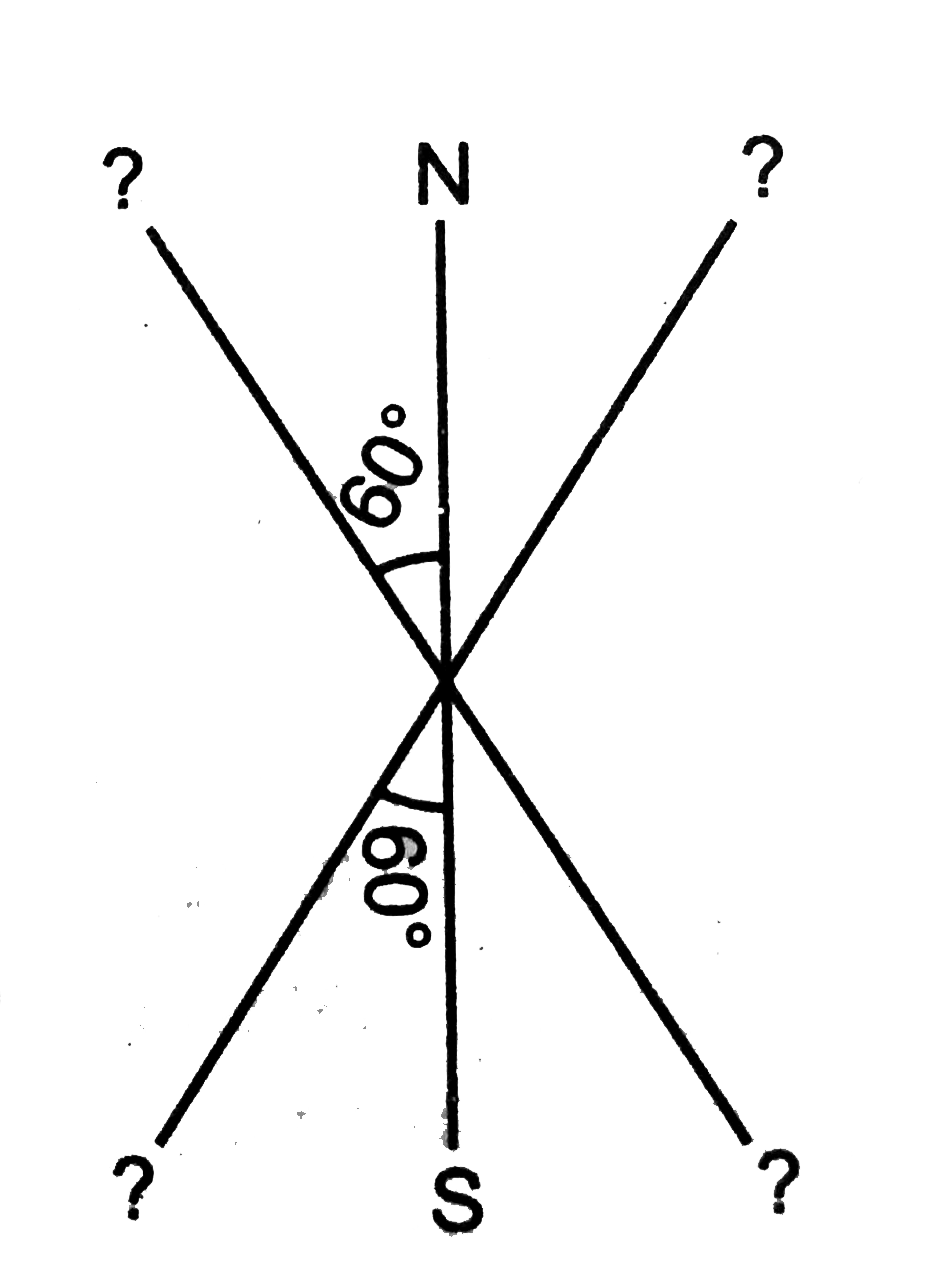Complete Solutions to All Questions of chapter MAGNETISM AND MATTER of Class 12 book with complete answers and questions
| Class 12 | PHYSICS |
| Chapter | MAGNETISM AND MATTER |
| NCERT EXEMPLAR | All Questions |
| Number Of Questions | 24 |
| Academic Year | 2023-24 |
A toroid of n turns, mean radius R and cross-sectional radius a carries current I. It is placed on a horizontal table taken as x-y plane. Its magnetic moment `vecM`
05:46View SolutionThe magnetic field of the earth can be modelled by that of a point dipole placed at the centre of the earth. The dipole axis makes an angle of 11.`3^(@)` with the axis of the earth. At mumbai, declination is nearlyzero, then.
03:49View SolutionIn a permanent magnet at room temperature.
02:42View SolutionConsider the two idealized systems: (i) a parallel plate capacitor with large plates and small separation and (ii) a long solenoid of length `Lgt gt R`, radius of cross-section. In (i) `vecE` is ideally treated as a constant between plates and zero outside. In (ii) magnetic field is constant inside the solenoid and zero outside. These idealised assumptions, however, contradict fundamental law as below:
03:23View SolutionA paramagnetic sample shows a net magnetisation of `8Am^-1` when placed in an external magnetic field of `0*6T` at a temperature of `4K`. When the same sample is placed in an external magnetic field of `0*2T` at a temperature of `16K`, the magnetisation will be
04:52View SolutionS is the surface of a lump of magnetic material.
04:20View SolutionThe primary origin(s) of magnetism lies in
03:44View SolutionA long solenoid has 1000 turns per metre and carries a current of `1A`. It has a soft iron core of `mu_r=1000`. The core is heated beyond the Curie temperature, `T_c`.
03:44View SolutionEssential difference between electrostatic shielding by a conducting shell and magnetostatic shielding is due to
04:12View SolutionLet the magnetic field on earth be modelled by that of a point magnetic dipole at the centre of earth. The angle of dip at a point on the geographical equator
05:32View SolutionA proton has spin and magnetic moment just like an electron. Why then its effect is neglected in magnetism of materials?
03:11View SolutionA permanent magnet in the shape of a thin cylinder of length 10 cm has `M=10^(6)A//m`. Calculate the magnetisation current `I_(M)`.
02:07View SolutionExplain quantitatively the order of magnitude difference between the diamagnetic susceptibility of `N_2(-5xx10^-9)` (at STP) and `Cu(-10^-5)`.
05:13View SolutionFrom molecular view point, discus the temperature dependence of susceptibility for diamagnetism, paramagnetism and ferromagnetism.
05:14View SolutionA ball of superconducting material is dipped in liquid nitrogen and placed near a bar magnet. (i) In which direction will it move? (ii) What will be the direction of it's magnetic moment?
03:46View SolutionVerify the Gauss's law for magnetic field of a point dipole of dipole moment M at the origin for the surface which is a sphere of radius R.
09:06View SolutionThree identical bar magnets are rivetted together at centre in the same place as shown in figure. This system is placed at rest in a slowly varying magnetic field. It is found that the system of magnets does not show any motion. The north-south poles of one magnet are shown in figure. Determine the poles of the remaining two.
 03:10View Solution
03:10View SolutionSuppose we want to verify the analogy between electrostatic and magnetostatic by an explicit experiment. Consider the motion of (i) electric dipole `vecp` in an electrostatic field `vecE` and (ii) magnetic dipole `vecM` in a magnetic field `vecB`. Write down a set of conditions on `vecE`, `vecB`, `vecp`, `vecM` so that the two motions are verified to be identical. (Assume identical initial conditions).
03:37View SolutionA bar magnet of magnetic moment M and moment of inertia I (about centre, perpendicular to length) is cut into two equal pieces, perpendicular to length. Let T be the period of oscillation of the original magnet about an axis through the mid point, perpendicular to length, in a magnetic field `vecB`. What would be the similar period `T^'` for each piece?
06:27View SolutionUse i the Ampere's law for H and ii continuity of lines of B, to conclude that inside a bar magnet, (a) lines of H run from the N-pole to S-pole while (b) lies of B must run from the S-pole to N -pole.
06:56View SolutionWhat are the dimensions of `chi`, the magnetic susceptibility? Consider an H-atom. Guess an expression for `chi` upto a constant by constructing a quantity of dimensions of `chi`, out of parameters of the atom: e, m, v, R and `mu_0`. Here, m is the electronic mass, v is electronic velocity, R is Bohr radius. Estimate the number so obtained and compare with the value of `|chi|~10^(-5)` for any solid material.
07:01View SolutionAssume the dipole model of earth's magnetic field B which is given by `B_V`= vertical component of magnetic field `=(mu_0)/(4pi)(2Mcos theta)/(r^3)`, `B_H`=Horizontal component of magnetic field `=(mu_0)/(4pi)(sin theta M)/(r^3)`, `theta=90^@`-latitude as measured from magnetic equator.
Find loci of points for which (i) `|vecB|` is minimum, (ii) dip angle is zero, and (iii) dip angle is `+-45^@`.09:00View SolutionConsider the plane S formed by the dipole axis and the axis of earth. Let P be point on the magnetic equator and in S. Let Q be the point of intersection of the geographical and magnetic equators Obtain the declination and dip angles at P and Q.
06:01View SolutionThere are two current carrying planar coils made each from identical wires of length L. `C_1` is the circular (radius R) and `C_2` is square (side a). They are so constructed that they have same frequency of oscillation when they are placed in the same uniform `vecB` and carry the same current i. Find a in terms of R.
07:56View Solution
All Questions questions and complete solutions for chapter MAGNETISM AND MATTER of NCERT PHYSICS (ENGLISH) of Class 12
